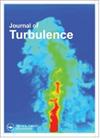根据有效性和第二定律对热交换器进行详细评估
IF 1.5
4区 工程技术
Q3 MECHANICS
引用次数: 1
摘要
本研究通过实验研究了在同心换热器内管内放置半圆形带式紊流器对其火用损失率(E*)和效率(E)的影响。实验的设计参数为雷诺数(Re)、节距(p)、直径(d)、厚度(t)和布置方式(a)。与光滑空管相比,这些参数的变化对火用损失率和效率有显著影响。研究结果以图形形式表示了火用损失率和效率随传递单元数的变化。最大的火用损失率和有效性值分别为0.263和0.556。结果表明,随着NTU的增加,换热器的效率提高,而火用损失率降低。由于效率的提高意味着传热的增加,它也会导致不可逆性的增加。因此,确定了多性能特征,因为将有效性与不可逆性引起的火用损失率一起评估将提供更真实的结果。从而找到最优的参数组合,获得最大的有效性值和最小的火用损失率值。最后,建立了本研究的人工神经网络模型,并采用贝叶斯优化方法确定了模型的超参数。在所建立的ANN模型中,有效性和火用损失率的MSE和R值分别为5.3238e-04、2.18177e-06和0.963、0.998。结果表明,所提出的人工神经网络模型可以成功地用于换热器的建模。本文章由计算机程序翻译,如有差异,请以英文原文为准。
Detailed evaluation of a heat exchanger in terms of effectiveness and second law
In this study, experiments were conducted to investigate the effects of semicircular strip turbulators placed in the inner tube of a concentric heat exchanger on its exergy loss rate (E*) and effectiveness (e). The Reynolds number (Re), pitch (p), diameter (d), thickness (t) and arrangement style (a) were the design parameters for the study. The changes in these parameters had significant effects on exergy loss rate and effectiveness compared to the results found with the smooth empty tube. The results of the study are given graphically as the change in the exergy loss rate and the change in effectiveness with the number of transfer units (NTU). The largest exergy loss rate and effectiveness values were found to be 0.263 and 0.556, respectively. It was concluded that the effectiveness of the heat exchanger increased with increasing NTU, while the exergy loss rate is decreased. Since the increase in effectiveness will mean an increase in heat transfer, it can also cause an increase in irreversibility. For this reason, multi-performance characteristics have been determined since evaluating the effectiveness together with the exergy loss rate caused by irreversibility will provide more realistic results. Thus, the optimum parameter combination was found, where the maximum effectiveness and the smallest exergy loss rate values were obtained. Finally, the artificial neural network (ANN) model of the study was created and the hyperparameters of the model were determined by the Bayesian optimisation method. In the created ANN model, MSE and R values of effectiveness and exergy loss rate were found as 5.3238e-04, 2.18177e-06 and 0.963, 0.998, respectively. According to these results, it has been confirmed that the proposed ANN model can be used successfully in the modelling of the heat exchanger.
求助全文
通过发布文献求助,成功后即可免费获取论文全文。
去求助
来源期刊

Journal of Turbulence
物理-力学
CiteScore
3.90
自引率
5.30%
发文量
23
审稿时长
6-12 weeks
期刊介绍:
Turbulence is a physical phenomenon occurring in most fluid flows, and is a major research topic at the cutting edge of science and technology. Journal of Turbulence ( JoT) is a digital forum for disseminating new theoretical, numerical and experimental knowledge aimed at understanding, predicting and controlling fluid turbulence.
JoT provides a common venue for communicating advances of fundamental and applied character across the many disciplines in which turbulence plays a vital role. Examples include turbulence arising in engineering fluid dynamics (aerodynamics and hydrodynamics, particulate and multi-phase flows, acoustics, hydraulics, combustion, aeroelasticity, transitional flows, turbo-machinery, heat transfer), geophysical fluid dynamics (environmental flows, oceanography, meteorology), in physics (magnetohydrodynamics and fusion, astrophysics, cryogenic and quantum fluids), and mathematics (turbulence from PDE’s, model systems). The multimedia capabilities offered by this electronic journal (including free colour images and video movies), provide a unique opportunity for disseminating turbulence research in visually impressive ways.
 求助内容:
求助内容: 应助结果提醒方式:
应助结果提醒方式:


